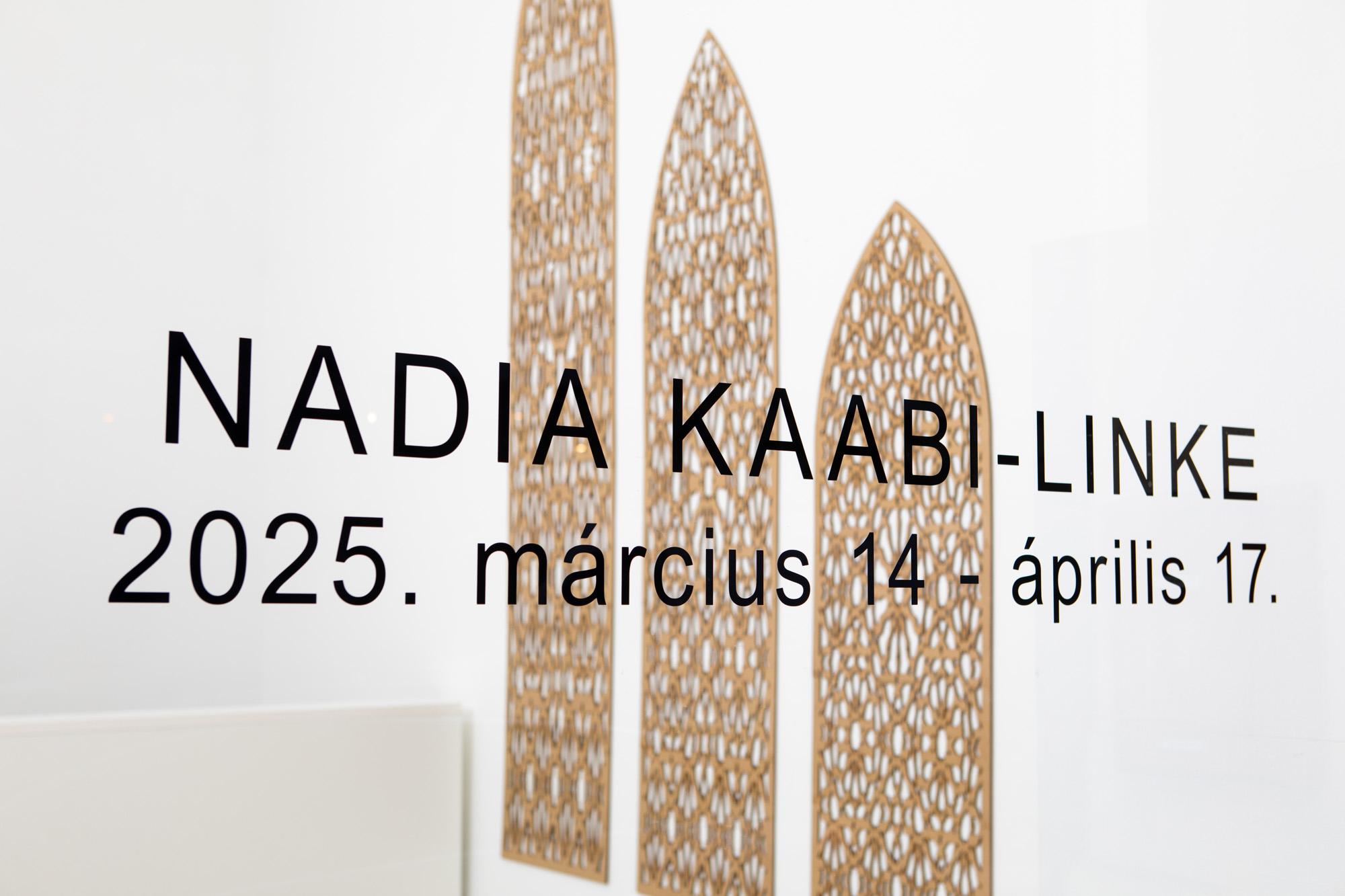
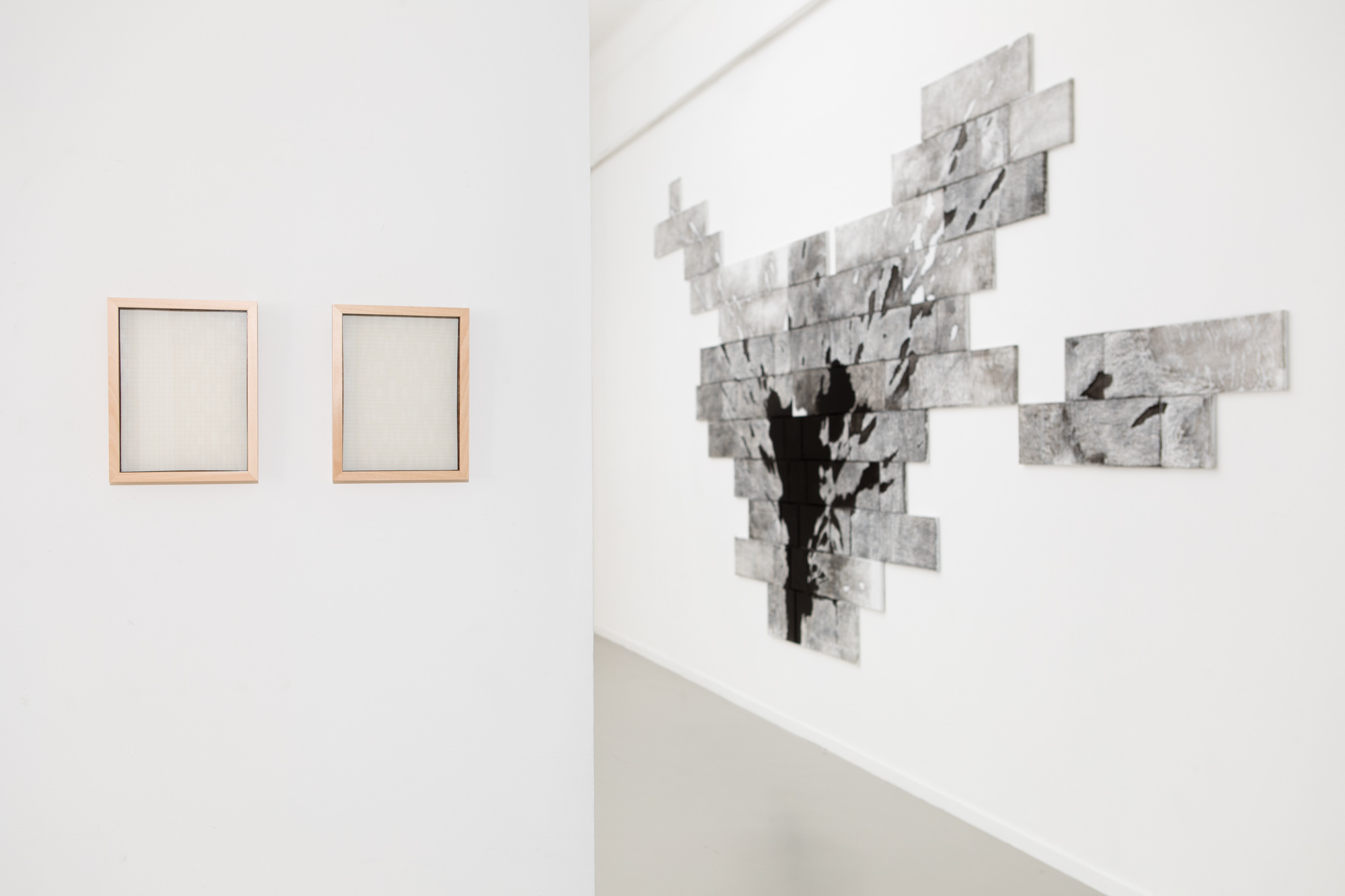
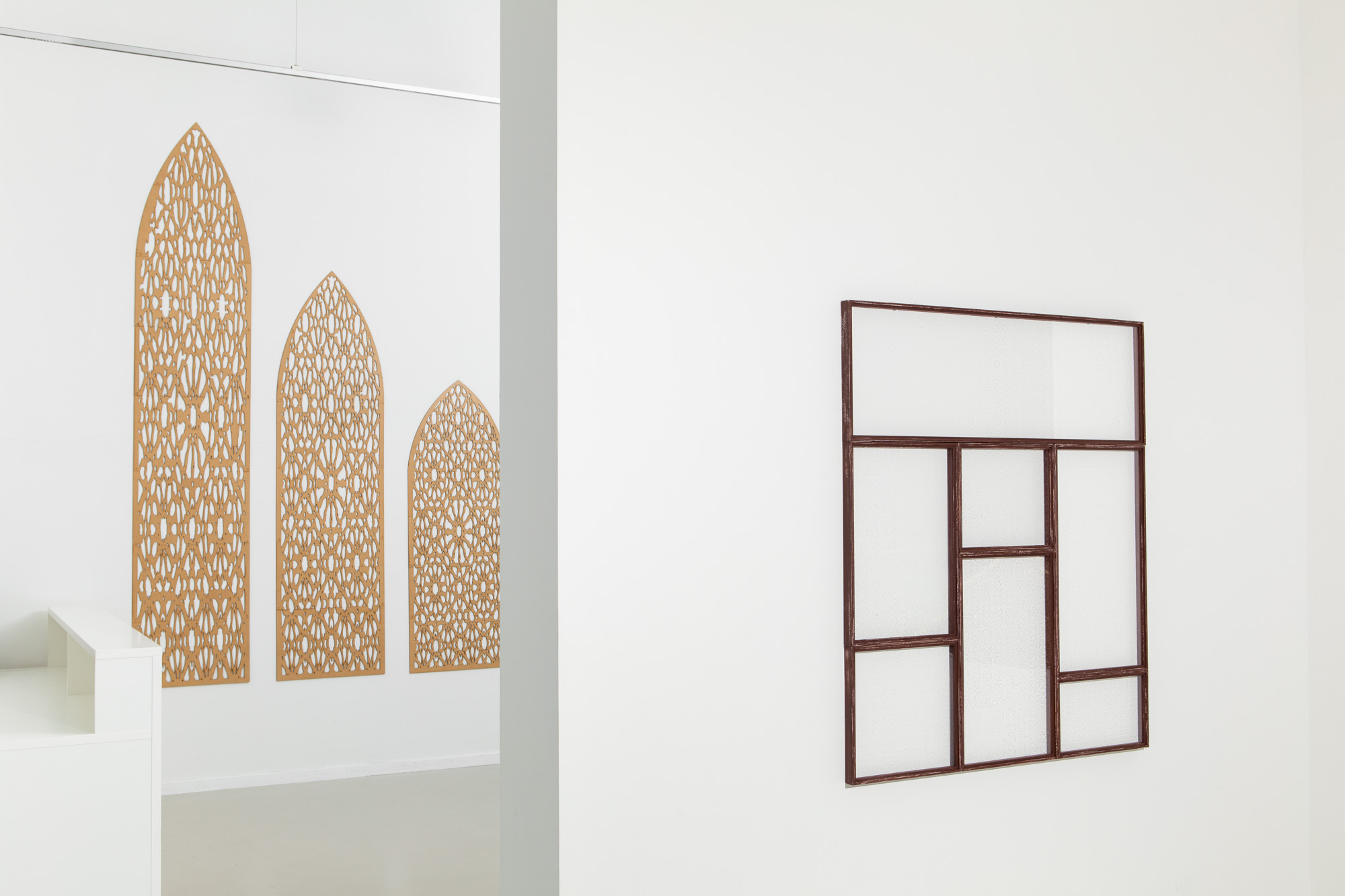
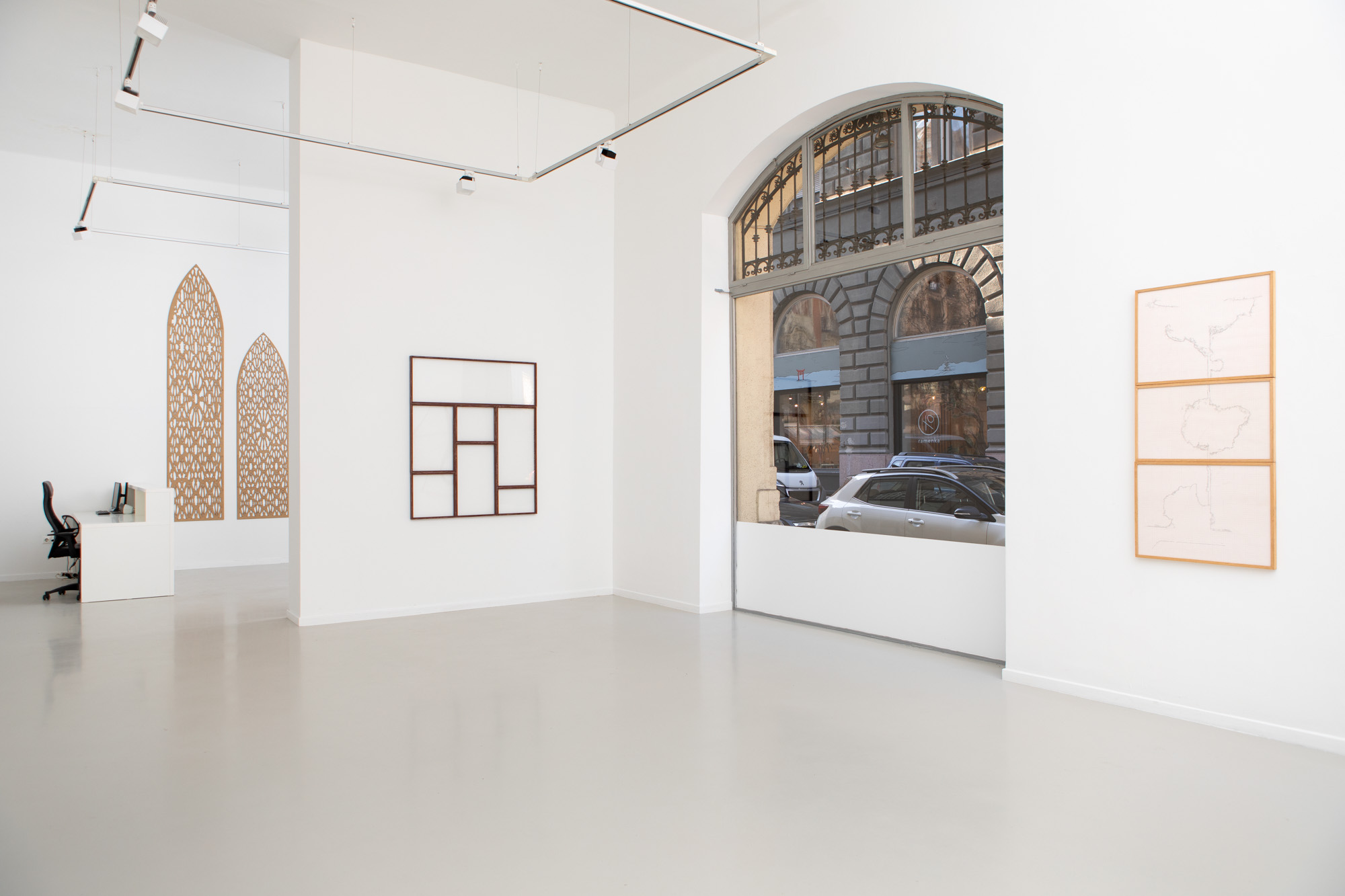
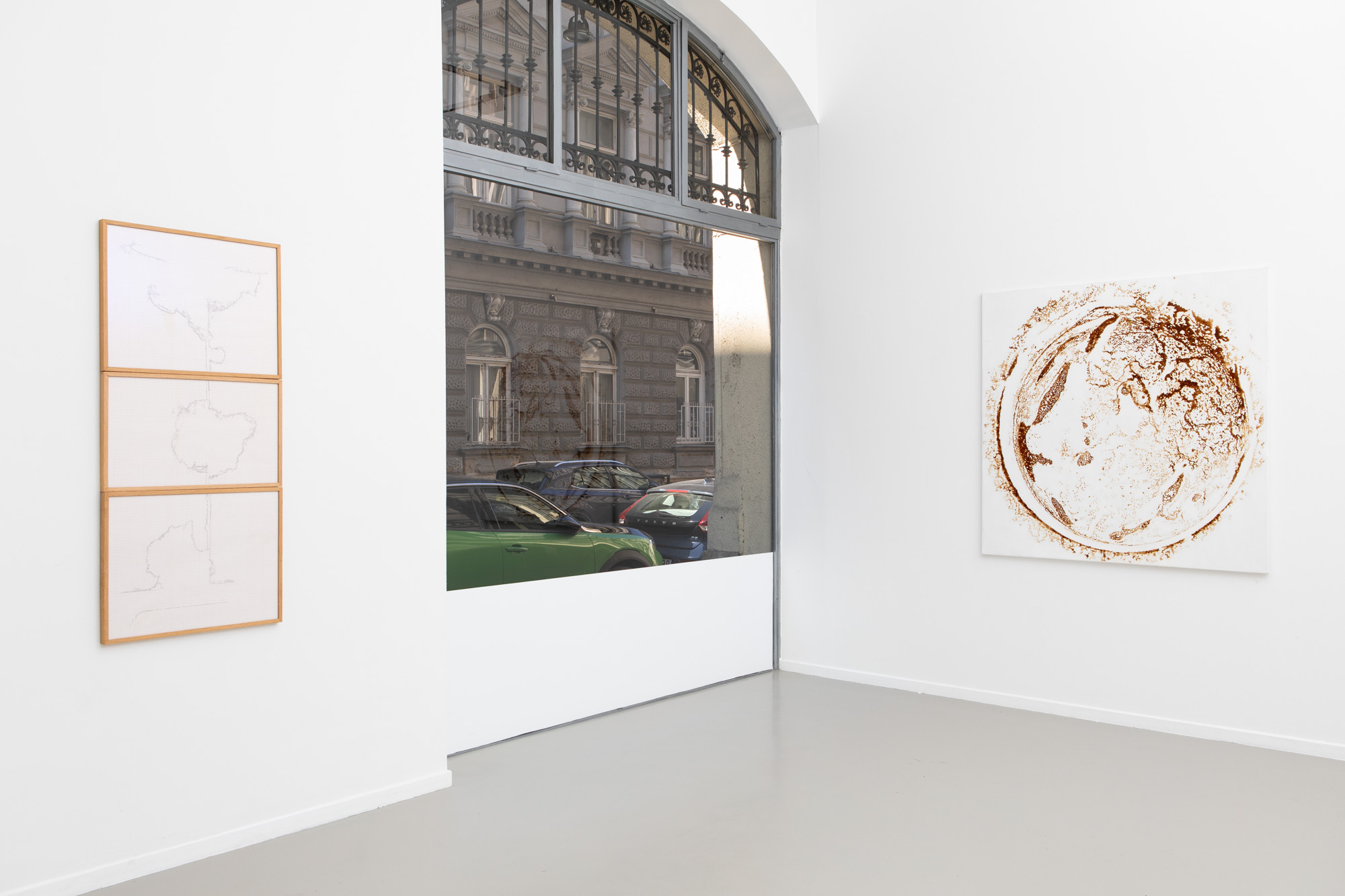
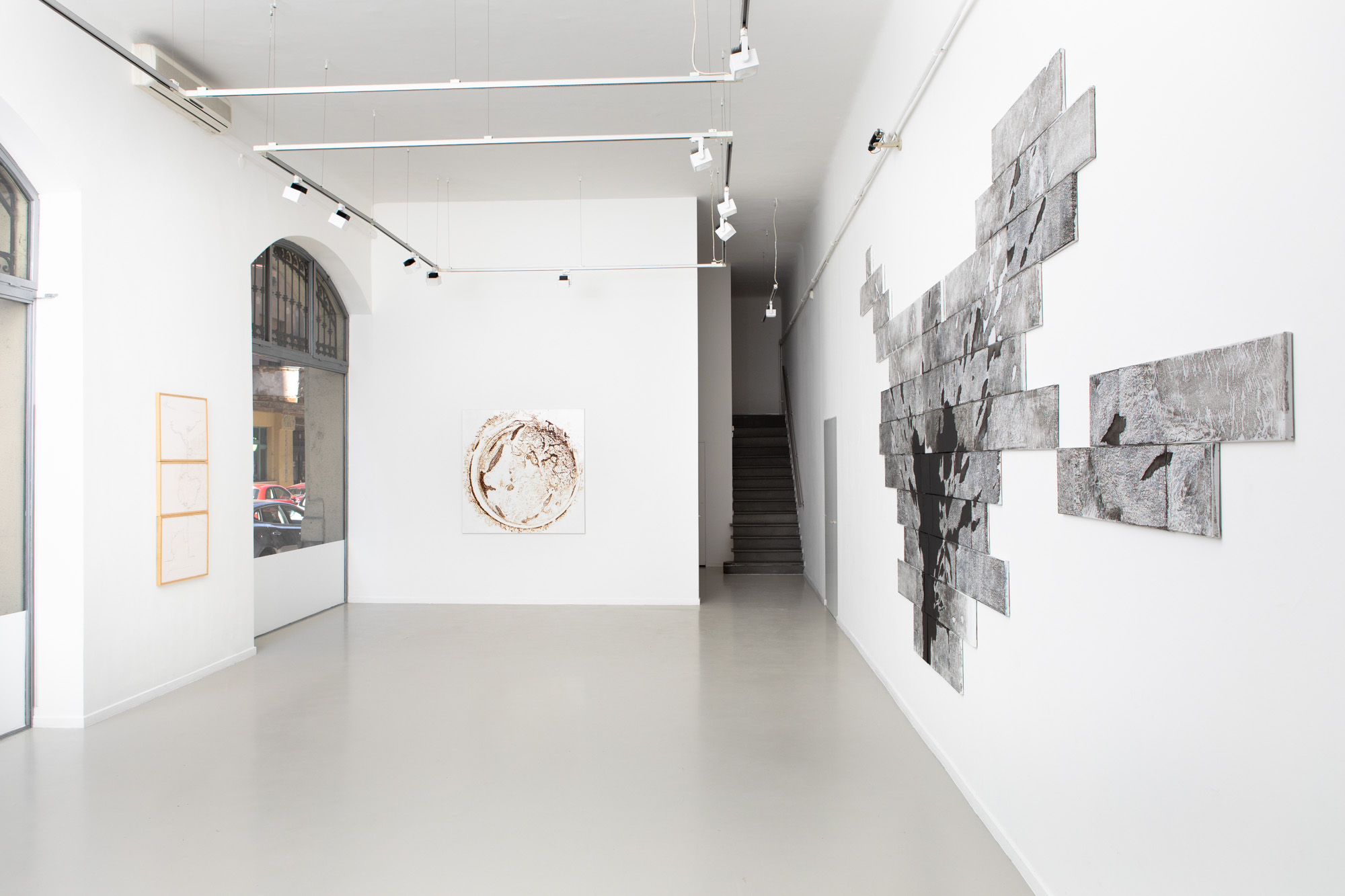
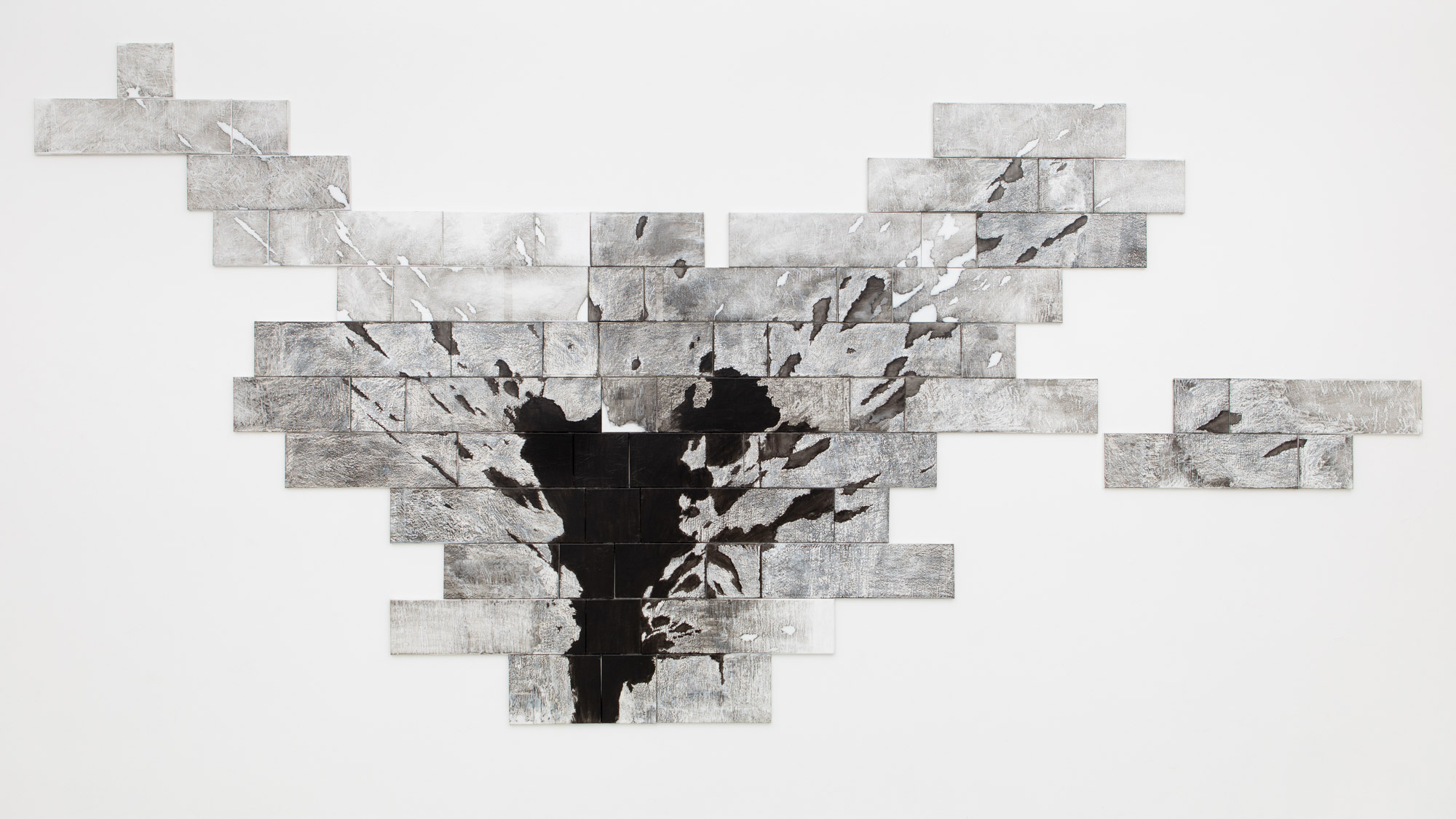
Nadia Kaabi-Linke
Ascending Cycles
The Erika Deák Gallery is delighted to present a solo exhibition of Nadia Kaabi-Linke. This will be her first exhibition in Budapest following her large-scale solo show at Hamburger Bahnhof last year.
Nadia Kaabi-Linke’s time- and site-specific art is inspired by concrete events and can be read through cultural, historical, social and political constellations. Her works unearth hidden traces of violence and the erasure of the past found in art and political histories, shedding light on phenomena that often remain invisible in today’s societies. Her works often feature symbols and metaphors related to sociopsychological themes, such as perception, memory, and geographically and politically constructed identity.
Nadia Kaabi-Linke’s life has been defined by her movement between different worlds, which often leads her to explore the themes of migration and identity in her works, uncovering the hidden histories of people living in different places. She gained international attention with her 2011 Flying Carpets installation, which spoke of the fragile existence of immigrant traders in Venice who often lay out their goods on quickly packable rugs, ready to flee from the authorities at a moment’s notice. The piece was shown at the 54th Venice Biennale and later purchased by the Guggenheim in New York, where it was exhibited in 2016.
The visuality of her works oscillates between beauty and raw power, sophistication and brutality, drawing the viewer into a play of contradictory forces such as fear and attraction, repulsion and desire. The strength of her works lies in their ability to evoke emotional reactions, even while addressing social and historical issues, making the experience of viewing them poetic and immersive.
Kaabi-Linke’s art spans a wide spectrum, from paintings to installations, sculptures, and video works. She often builds her compositions from unconventional materials such as plaster, hair, wire, or nails. Her installations are richly layered, with the juxtaposition of various materials and elements, as well as the interplay of light and shadow, revealing deeper connections. Her works often modify the spaces they inhabit, interacting with the physical environment while also reflecting on the cultural, historical, and social context of the given location.
The works featured in our Ascending Cycles exhibition can be interpreted through the dynamics of concealment and revelation. These works lift our gaze, open our eyes, and help us see and perceive the stories we were once blind to. The cohesion of the exhibited works lies in their tactile sensibility: despite carrying heavy and profound messages, their sensitive surfaces and fine craftsmanship help the viewer connect directly with the issues these works bring to light.
Phoenix and Full Scale: Exhibition Road both reveal the physical scars of the Second World War, focusing attention on the meaninglessness and ambivalence of systemic destruction. While the former commemorates the destruction of the Friedrichswerder German cemetery and the war victims buried there, the latter traces the barely visible outlines of the bombs, grenades, and machine gun bullets that caused great devastation on Exhibition Road in Kensington, London, during WWII.
Amina’s Tears and Everything I Wanted to Tell You address the invisibility of female narratives. The former emphasizes the emotional richness of women living behind the mashrabiya, while in Everything I Wanted to Tell You, the artist reflects on her grandparents’ personal stories from the war. Both works highlight absence: the experiences of women behind the mashrabiya are as inaccessible as the unspoken stories of women from past generations.
Nadia Kaabi-Linke (1978, Tunis) is a visual artist living in Berlin, with Ukrainian and Tunisian roots. Her works often reflect on both her roots and the current political situations. Her art is both autobiographical and social, tackling issues related to geopolitics, migration, transnational identities, and violence. She grew up between Tunis, Kyiv, Dubai, and Paris, and received her degree from the Tunis Institute of Fine Arts, followed by a PhD in philosophy of art from the Sorbonne. Her first solo exhibition took place in 2009 in Tunis, followed by shows in Berlin in 2010 and in London in 2014. In 2011, she won the prestigious Abraaj Group Art Prize for Flying Carpets. In 2014, she received the Discoveries Award at Art Basel Hong Kong. She has participated in numerous solo and group exhibitions, including in Dubai, New York, India, and Tunisia. Her works can be found in the world’s most important public collections, including the MoMA, the Guggenheim Museum in New York, the Dallas Museum of Art, the National Art Museum of Ukraine in Kyiv, the Burger Collection in Hong Kong and the Centre Pompidou in Paris.
Katica Kocsis
Opening: 2025. March 13, Thursday, 6:00 PM
Curator: Katica Kocsis, aesthete
On view: 2025. March 14 – April 17
Open: Wednesday - Friday, 12:00 - 6:00 PM, and by appointment